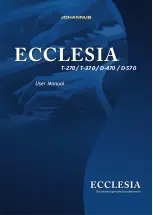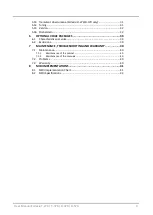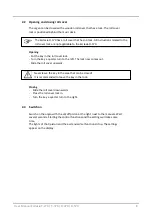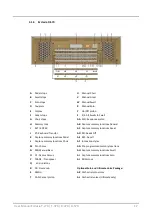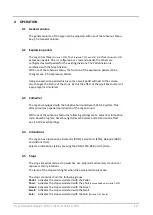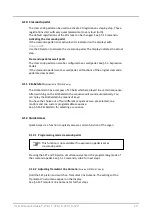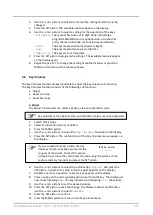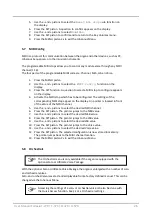
User Manual Ecclesia T-270 / T-370 / D-470 / D-570
14
4
OPERATION
4.1
General volume
The general volume of the organ can be adjusted with use of the Johannus Menu.
See § 5.4 General Volume.
4.2
Expression pedals
The organ has three
(Ecclesia T-270)
, four
(Ecclesia T-370 and D-470)
or five
(Ecclesia D-570)
expression pedals. One is configured as a crescendo pedal, the others are
configured as swell pedals for the existing divisions. The Pedal division is
combined with the Great division.
With use of the Johannus Menu, the function of the expression pedals can be
changed, see § 5.3 Expression Pedals.
Using an expression pedal which is set as a swell pedal will next to the volume
also changes the timbre of the stops. By this the effect of the swell box shutters of
a pipe organ is simulated.
4.3
Cathedral
The organ is equipped with the Adaptive Surround Reverb ASR-12 system. This
effect provides a spatial reproduction of the organ sound.
With use of the Johannus Menu the following settings are to adjust per intonation
style: Reverb Program, Reverb Length, Reverb Volume and 3D Surround effect.
See § 5.10 Reverb Settings.
4.4
Intonations
The organ has 4 intonations: Romantic (ROM), Symphonic (SYM), Baroque (BAR)
and Historic (HIS).
Select an intonation style by pressing the ROM, SYM, BAR or HIS piston.
4.5
Stops
The stops are activated via stop switches, pre-programmed memory locations or
capture memory locations.
The lamp of the stop switch lights when the associated stop is active.
The stops are divided into the following groups:
Pedal:
Activates the stops associated with the Pedal.
Choir:
Activates the stops associated with the Choir
(not available on Ecclesia T-270)
.
Great:
Activates the stops associated with the Great.
Swell:
Activates the stops associated with the Swell.
Solo:
Activates the stops associated with the Solo
(Ecclesia D-570 only)
.

